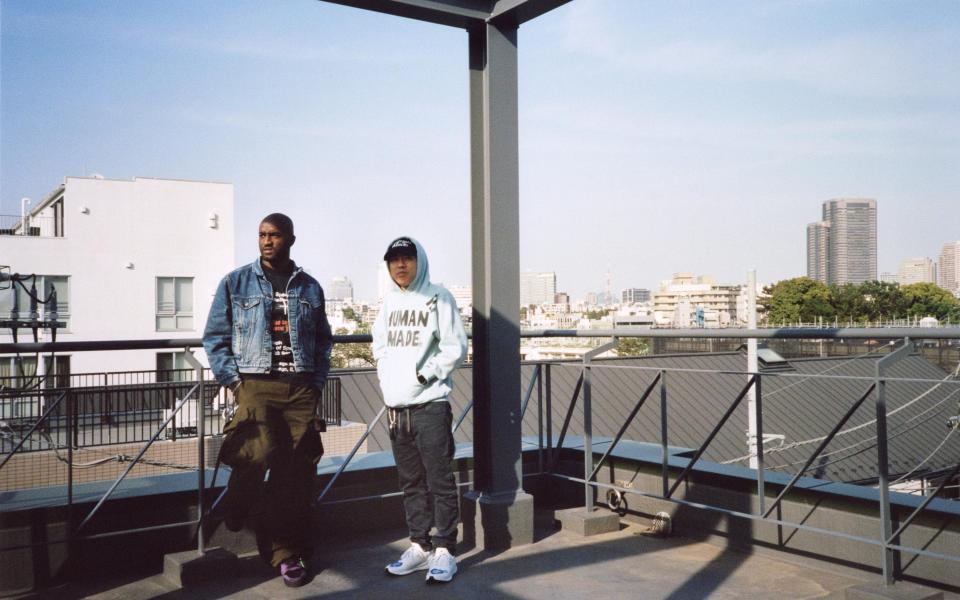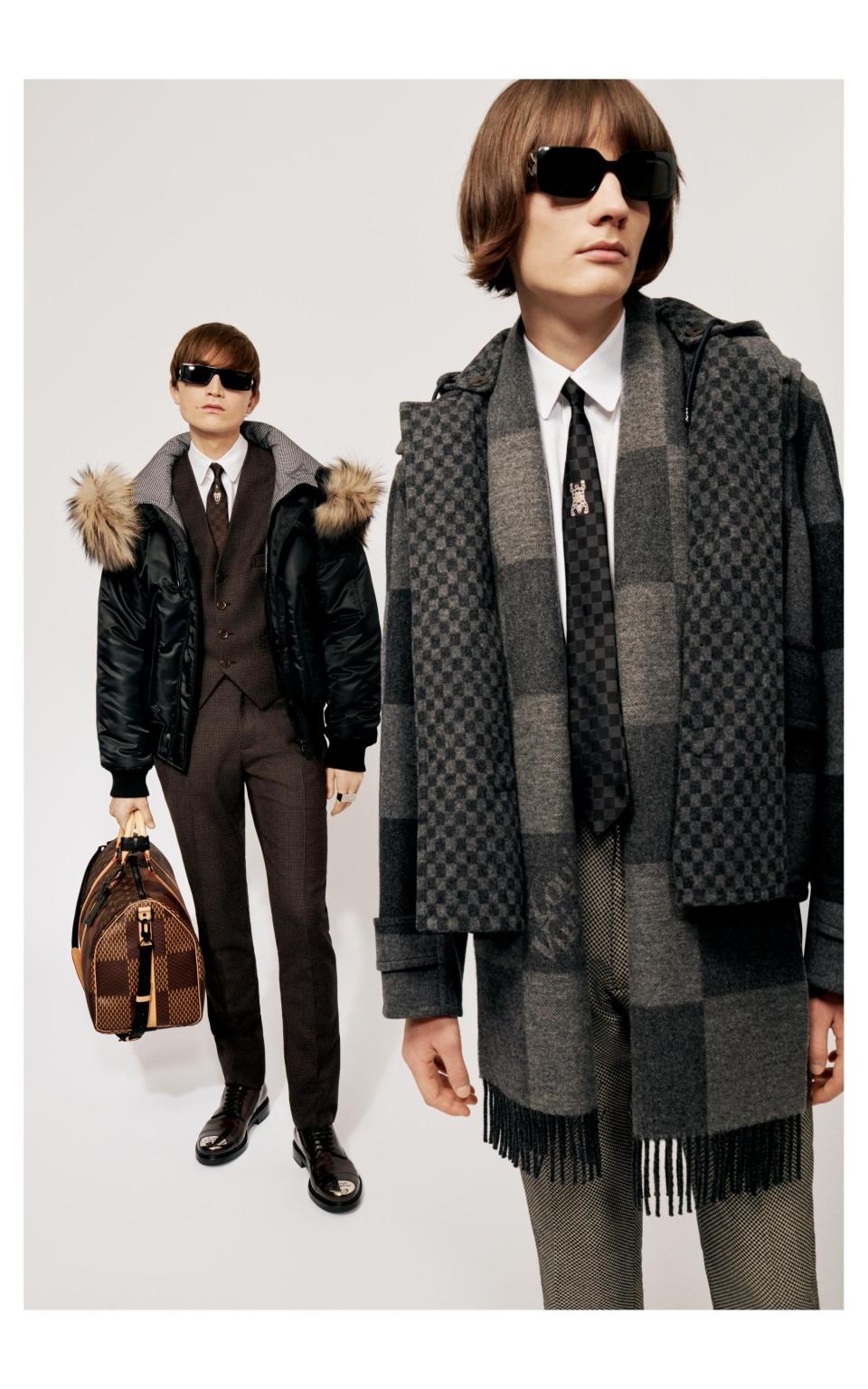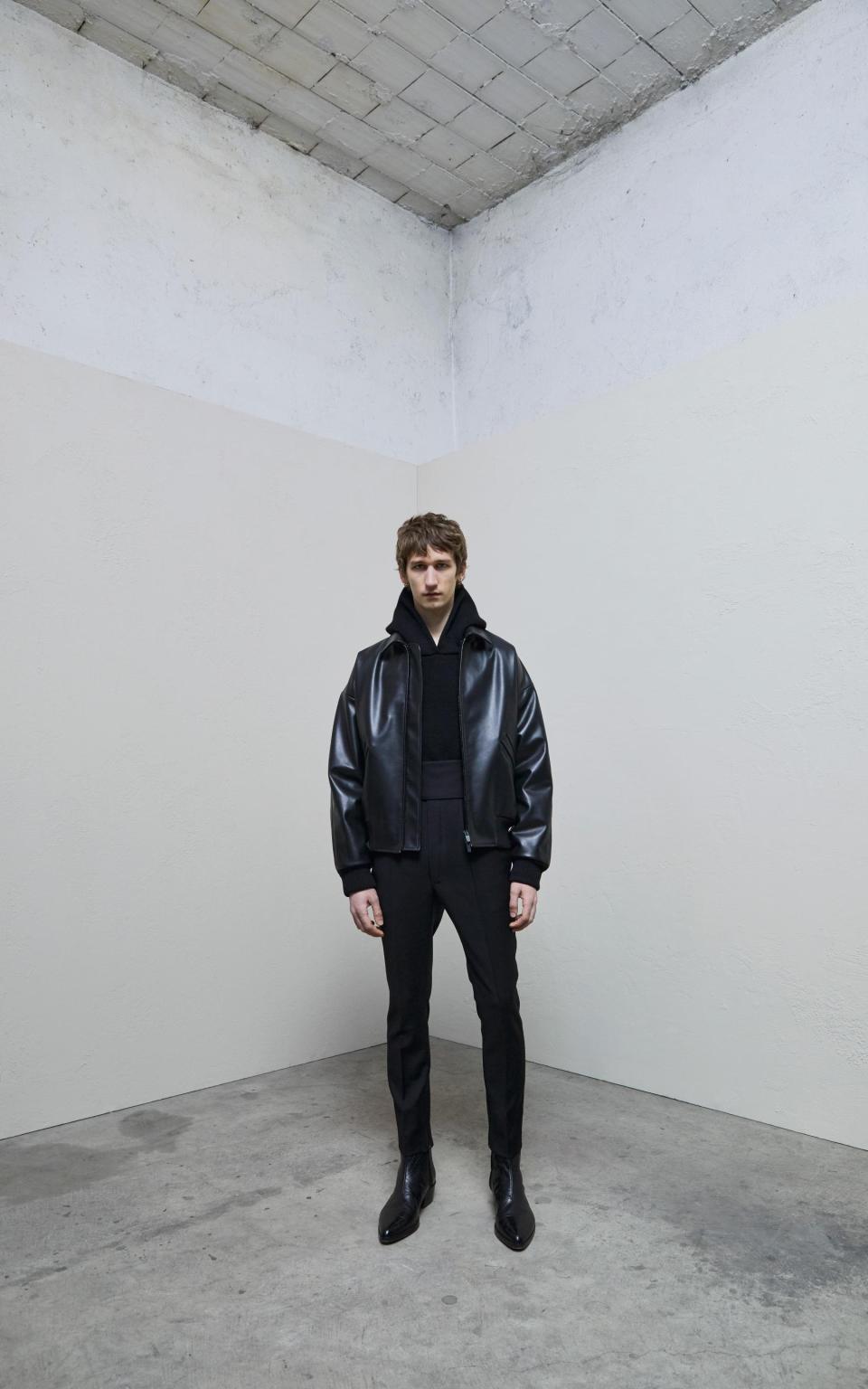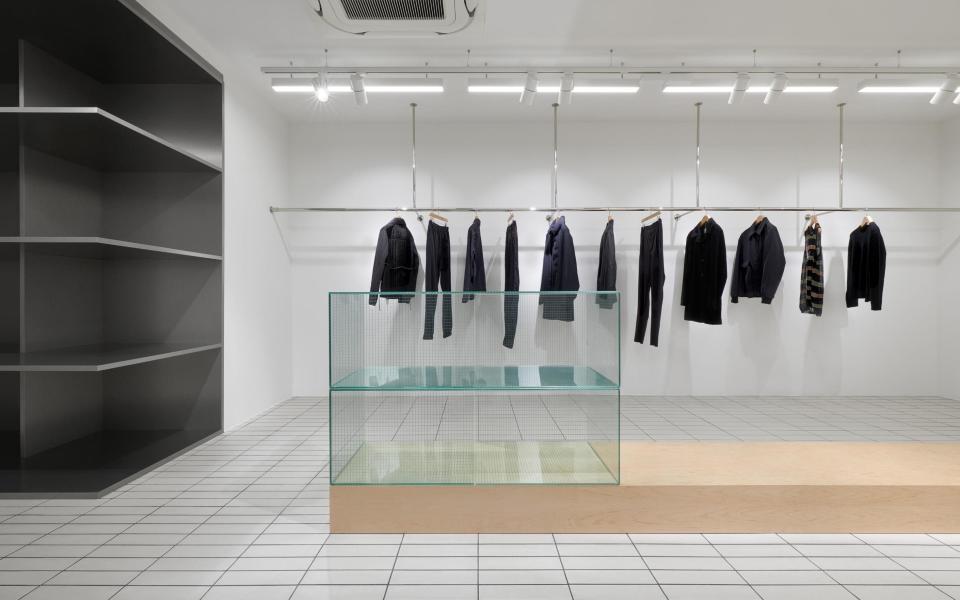Dior Nike Air arrives at Selfridges: is this the future of sportswear?

As Dior debuts a new pop up store in Selfridges to unveil its sporting collaboration with Nike Air, showcasing Kim Jones' work with the athletic leisurewear titan, we look back on writer Eliot Haworth's story on how dress-down attire became mainstream. This piece was first published in the September 2019 issue of ST Men's magazine.
At his Dior cruise show in Miami last December, the men’s creative director Kim Jones presented a collaboration with Shawn Stussy, the Californian designer who founded the cult surfwear label Stüssy in the early 1980s. The collection featured a Technicolor assemblage of knits, prints and a scribbly Dior logo and bee emblem, interpreted in Stussy’s signature hand.
Also seen for the first time was a new trainer – the product of a separate Dior collaboration with Nike Air, to coincide with the 35th anniversary of the Air Jordan 1. That shoe has since spawned an entire standalone Dior x Air capsule collection, launched in autumn last year and debuting in Selfridges this week.
But what’s most interesting is how un-sporty all these products feel; there are hoodies and shorts and a tracksuit set, but they don’t look like anything you’d wear to the gym. They are joined by a plethora of shirts, trousers, suits, sleeveless sweater vests and ties. Even the trainers defy trainerdom by being made to the same exacting standards as Dior’s saddle bags.

This is full-on luxury, largely tailoring focused, with sportiness as an undercurrent rather than the defining feature. "I chose to collaborate with the Jordan brand because it’s iconic, and so is Dior," says Jones. "With regards to where sportswear is going, we all pay attention to youth culture, and speaking to my friends’ kids in their teens, you’ll see that all they want to wear is street-style clothing."
In an announcement for its tie-up with Air Jordan, the house stated that the collection "transcends sportswear in an unexpected way through the art of tailoring". This desire to move sportswear into new territory seems to be a unifying feature across men’s fashion of late.
The traditional Italian house Ermenegildo Zegna also recently announced a capsule collection, this time with the Los Angeles-based streetwear label Fear of God, released last winter.
Again, the products are predominantly tailoring, with dark, muted colours, sharp lines and minimal branding. Zegna’s wording, in its communication on the capsule collection, tries its hardest to avoid the terms ‘streetwear’ or ‘sportswear’, instead veering towards euphemism – all ‘sophisticated leisurewear ’ and ‘laid-back luxury’.
Meanwhile Virgil Abloh – Jones’s successor as creative director of Louis Vuitton menswear and the appointment that cemented the importance of streetwear in the world of luxury – debuted a prefall collaboration with the Japanese designer Nigo recently.
Nigo is one of the most influential streetwear designers of all time, with his label A Bathing Ape defining ’90s and mid-noughties street style – however Louis Vuitton refers to him as an artist, and the collection is, once again, tailoring focused. This follows on from Abloh’s comments last year that in the coming decade streetwear was "gonna die".

What exactly is going on here? It is understandable that fashion designers might want to break away from established categories, even if it leaves them somewhat tongue-tied (Abloh has even created a dictionary of new terms for items in his collections).
Sportswear, streetwear – whatever you might want to call it – has been dominant in menswear for almost a decade, and change is to be expected. After season upon season of casual, street-orientated clothing, this spring’s and the coming autumn’s collections feel distinctly formal, as though there had been a collective desire to smarten up, put on a pair of shoes and wear a suit.
Even in collections shown by younger, more experimental labels like Alyx, Sacai and Random Identities the core elements at play were typically trousers, shirts, knitwear, coats instead of puffers, track trousers and trainers. It would be misleading to see this as a decisive break, however. Tailoring is back but cuts are looser, more relaxed. This is less a dying out of streetwear and more a recalibration.
Indeed, Abloh later expanded on his earlier comments, in the way one might apologise to a dear friend who has been accidentally insulted, clarifying that he was simply commenting on the way trends naturally die down and then return. That sounds about right; sportswear is waning but it’s hardly about to disappear. Male dressing habits have transformed drastically in the past decade, and suits are no longer a necessity, or even a reality, for many men.
Flexibility and mixing together of varied items is the norm. The idea of a wholesale return to formality as the default state of men’s fashion seems unlikely, not to mention outdated. What notionally sporty capsules such as those by Dior, Vuitton and Zegna demonstrate, if anything, is that rather than a distancing there is a closer merging of these two worlds.

Sportswear is so integrated into men’s fashion that it doesn’t need to be a standalone, identifiable trend; it is just there–a casual note even when clothes are more formal. Sportswear has also changed the business of luxury. Many of its innovative business practices have been adopted by Paris and Milan.
Capsule collections, although they often borrow the ‘pre-fall’ or ‘cruise’ nomenclature of the in-betweeny seasons in fashion that only insiders will really be aware of, are just ‘drops’ by another name (the practice in sportswear whereby a small range arrives amid a rush of excitement and quickly sells out). The Dior x Air collection could even be considered a drop within a drop.
Collaborating with other designers or labels to add extra weight and desirability to a collection is also straight from the sportswear playbook of creating fervour and obsession around limited releases and team-ups. Abloh, having come from his own ultra-popular streetwear label Off White, has brought this sensibility to the process of directing a luxury fashion house – and never more so than at his catwalk shows.
The tunnel of fans hoping for selfies outside the venue; highly desirable show invitations and other ephemera; and an eclectic front row drawn from his pool of cool associates in the world of music (A$AP Rocky and Kanye West are regular fixtures) – all this is evidence of streetwear culture’s continuing influence on fashion.
Jones, too, has pedigree in collections that tap into street clothing and in savvy collaborations – one of the earliest being Umbro by Kim Jones, a much-loved and prescient sport fashion crossover that launched after he left Central Saint Martins in the mid-2000s. And while he was at Louis Vuitton, his collaboration with the cult skate label Supreme for autumn/winter 2017 set a precedent for luxury’s engagement with streetwear culture.
At Dior, Jones has embraced the house’s tailoring and couture heritage, yet undercut everything with a casual ease and versatility.
"Sportswear has established my career, I respect that," he says. "You also have to respect what makes a more formal house like Dior. But we do it in a cool way. It’s still based on tailoring and elegance, but with a modern edge. It’s lighter and easier to wear. Because it adapts to more styles, it appeals to a broader spectrum of people."
He is talking about his house’s approach to suits, but the logic applies to sweaters and trainers. The focus is on easy elegance and subtlety, carrying the essence of sportswear but not immediately identifiable as one thing or another. And men are buying it.

"It was back in 2011 that we first saw the Givenchy Rottweiler-print hoodies and sweats. And from there it grew and grew," said Damien Paul, head of menswear at Matches Fashion. "But now it has evolved: there’s fewer logos, less branding, less emphasis on the 'it' designer sneaker. Instead, we are seeing cleaner iterations of what can be defined as sports streetwear."
Indeed, over the past year, there has been a 20 per cent decrease in sales of printed and branded T-shirts, and a 42 per cent decrease in sales of hoodies at Matches. Meanwhile, suits and tailoring orders have more than doubled. Men are also back buying more formal shoes and boots.
The Swedish retailer Très Bien, founded in 2006 by brothers Simon and Hannes Hogeman together with Björn Lindén and Jakob Törnberg, established itself very early on by stocking both high fashion and practical sports or streetwear, placing the likes of New Balance and Stüssy next to Dries Van Noten and Comme des Garçons.
It’s a levelling approach that has proved a great success, and last autumn they opened their first bricks-and-mortar shop outside Sweden, just a few steps from the Supreme store in Soho. Speaking over the phone from Malmö, Hannes Hogeman noted that they’ve seen the same trend away from sportswear and towards more formal clothes that Paul has seen at Matches. So sportswear is evolving rather than disappearing.
"Brands that are doing really well for us right now are those with a streetwear approach but that are definitely more designer," says Hogeman. After years of heavy branding and brashness, there is a desire for something a bit… calmer. "The style is subtle. It’s not screaming," Hogeman adds. ‘It’s very hard to define, and very nice to look at.
The Dior Men Air pop up store is now at Selfridges, 400 Oxford Street, W1A 1AB.
Sign up for the Telegraph Luxury newsletter for your weekly dose of exquisite taste and expert opinion.
